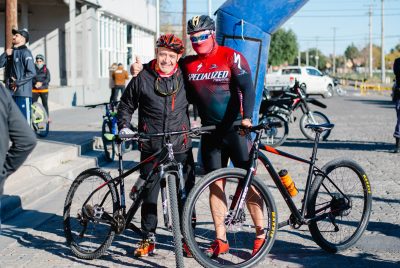Tips For Learning To Ride a Bicycle: A Beginners Guide
Introduction
As a cycling enthusiast and advisor, I understand the excitement and joy that come with learning to ride a bicycle. It’s an empowering skill that opens up a world of possibilities for transportation, fitness, and adventure. Whether you’re a child or an adult, this beginner’s guide will provide you with valuable tips to start your cycling journey with confidence and enjoyment.
Understanding the Basics of Cycling
Embracing the Learning Process
Embracing the learning process is a fundamental mindset when it comes to mastering the skill of riding a bicycle. Learning anything new can be challenging, especially for beginners, but having a positive and open attitude can make a world of difference. Instead of being intimidated by the unfamiliarity or initial difficulties, embrace the journey of learning to ride a bicycle. Understand that it takes time and practice to develop the necessary balance, coordination, and confidence. Embracing the learning process means being patient with yourself, celebrating small victories, and not being afraid to make mistakes. Remember that every stumble or wobble is an opportunity to learn and improve. With perseverance and a willingness to learn from each experience, you’ll gradually gain proficiency and enjoy the exhilarating freedom that comes with riding a bicycle.
Knowing Your Bicycle’s Parts
When it comes to learning to ride a bicycle, it’s essential to familiarize yourself with the various parts that make up your bike. Understanding the different components not only helps you troubleshoot issues but also allows you to communicate effectively with bike mechanics or fellow cyclists. Here are some key parts you should know:
Frame:
The frame forms the backbone of your bicycle. It’s the main structure that holds all the other components together. Frames can be made of different materials like steel, aluminum, carbon fiber, or titanium, each offering unique characteristics in terms of weight, durability, and ride quality.
Handlebars:
The handlebars are where you place your hands for steering and controlling the bike. They come in various shapes, including flat, drop, or riser bars, and each design caters to different riding styles and preferences. Understanding the type of handlebars on your bike helps you maintain a comfortable and ergonomic riding position.
Wheels and Tires:
Wheels consist of rims, spokes, and hubs. The rims hold the tires in place, while spokes connect the rim to the hub. Tires provide the contact point between your bike and the road, and they come in different sizes, treads, and widths. Knowing how to properly inflate tires, check for wear, and change a flat will ensure a smoother and safer ride.
Brakes:
Brakes are crucial for controlling your bike’s speed and ensuring your safety. Common types of brakes include rim brakes, disc brakes, and coaster brakes. Understanding how your specific brakes function, including how to engage and adjust them, is essential for effective stopping power.
Gears:
Many bicycles have gears that allow you to change the resistance or cadence required for pedalling. Gears are controlled by shifters, which can be located on the handlebars or integrated into the brake levers. Familiarize yourself with the gear mechanisms on your bike, including how to shift up or down, to optimize your riding experience in different terrains.
Understanding the Basics of Cycling
Maintaining Proper Posture:
Maintaining the correct posture while cycling is not only important for comfort but also for efficient power transfer, stability, and injury prevention. Here are some key points to consider:
Neutral Spine:
Keep your back straight and avoid slouching or hunching over the handlebars. A neutral spine position helps distribute your weight evenly and reduces strain on your lower back.
Relaxed Shoulders:
Allow your shoulders to relax and avoid tensing them up. This helps prevent unnecessary fatigue and improves overall comfort while riding.
Bent Elbows:
Maintain a slight bend in your elbows to absorb shock and vibrations from the road. This flexibility allows you to better control the bike and react to obstacles or changes in terrain.
Balanced Weight Distribution:
Distribute your weight evenly between the saddle, pedals, and handlebars. Avoid putting excessive weight on one side, as it can affect your bike’s stability and handling.
Core Engagement:
Engage your core muscles by lightly activating your abdominal muscles. This helps stabilize your torso and improves overall control and balance on the bike.
Proper Saddle Position:
Ensure your saddle is adjusted to the appropriate height and angle. A saddle that is too high or too low can lead to discomfort, inefficient pedalling, and potential knee injuries.
By maintaining proper posture, you’ll not only ride with more comfort but also enhance your cycling efficiency and reduce the risk of strain or injury. Regularly check and adjust your bike’s fit to ensure it is properly set up for your body proportions and riding style.
Finding a Safe Practice Area
Seeking Traffic-Free Zones:
When learning to ride a bicycle, seeking out traffic-free zones is a wise strategy. Finding a safe and secluded area to practice can help build confidence and reduce the risk of accidents. Look for empty parking lots, quiet residential streets, or designated bike paths where you can ride without the worry of vehicles zooming by. These areas provide ample space to focus on improving your balance, steering, and braking without the added stress of navigating through traffic. By starting in traffic-free zones, you can gradually build your skills and comfort level before venturing into busier areas.
Utilizing Open Spaces and Parks:
Open spaces and parks offer an excellent environment for beginners to learn how to ride a bicycle. These areas often provide a spacious and scenic setting, making the learning process more enjoyable. Look for parks with wide pathways or grassy areas where you can practice riding without the fear of traffic or obstacles. These spaces allow you to explore different terrains, practice turns, and build endurance. Additionally, parks may have designated bike lanes or dedicated cycling areas, providing a safe and supportive environment to enhance your skills. Utilizing open spaces and parks not only offers a pleasant learning experience but also allows you to connect with nature and enjoy the outdoors while honing your cycling abilities.
Considering Local Bike Paths:
When embarking on your journey to learn how to ride a bicycle, considering local bike paths is a valuable step. Many communities have established bike paths specifically designed for cyclists of all skill levels. These paths are typically well-maintained, clearly marked, and offer a safe route away from road traffic. Local bike paths often provide a variety of terrains and distances, allowing you to gradually progress from shorter, easier routes to more challenging ones as your skills improve. Riding on bike paths not only enhances your cycling abilities but also introduces you to a community of fellow cyclists, providing opportunities to learn from experienced riders and discover new routes. By considering local bike paths, you can enjoy the benefits of a dedicated cycling infrastructure and make your learning journey more enjoyable and rewarding.
Mastering Balance and Coordination
Starting with Balance Exercises:
When learning to ride a bicycle, starting with balance exercises is crucial. Developing a sense of balance is fundamental for maintaining stability while riding. Begin by straddling the bike with both feet on the ground and slowly lift your feet, trying to maintain your balance. Start with short durations and gradually increase the time as you gain confidence. You can also practice balance by walking alongside the bike and gradually picking up speed while keeping both feet off the ground. These exercises help train your muscles and build the necessary core strength for maintaining balance while riding, setting a solid foundation for your cycling skills.
Practicing Steering Control:
To become a proficient cyclist, practicing steering control is essential. Start by riding in a straight line and gradually introduce gentle turns to get a feel for how the bike responds. Experiment with different hand positions on the handlebars and practice leaning into turns while maintaining your balance. As you become more comfortable, challenge yourself by practicing tighter turns and navigating through obstacles. Remember to keep your eyes focused on where you want to go, as your body naturally follows your gaze. With consistent practice, you’ll develop precise steering control, allowing you to maneuver confidently and safely on various terrains.
Enhancing Pedal Coordination:
Mastering pedal coordination is a key aspect of learning to ride a bicycle effectively. Begin by positioning one foot on the ground and the other on the pedal at the highest point. Push down with the foot on the pedal to propel the bike forward and repeat the motion with the other foot. Focus on maintaining a smooth and fluid pedalling motion, ensuring both legs work together in a coordinated manner. As you gain confidence, practice shifting gears to experience different resistance levels and improve your pedal stroke efficiency. Developing strong pedal coordination will not only optimize your speed and efficiency but also enhance your overall control and riding experience
Starting and Stopping Properly
Positioning Your Body and Feet:
Proper body and foot positioning are essential for maintaining stability and control while riding a bicycle. Start by sitting upright with your back straight and relaxed. Keep your knees slightly bent and aligned with the bike’s frame. Place the balls of your feet on the pedals, ensuring that your feet are secure and able to apply pressure when needed. Maintain a firm grip on the handlebars with your arms slightly bent, allowing for better maneuverability and shock absorption. By positioning your body and feet correctly, you’ll be able to distribute your weight effectively, improve balance, and enhance your overall riding experience.
Utilizing the Push-Off Technique:
The push-off technique is a valuable skill to master when learning to ride a bicycle. To start, position one foot on the ground while the other foot rests on the pedal in the highest position. Apply pressure on the foot that is on the ground to give yourself a push forward, simultaneously lifting your other foot off the ground and placing it on the other pedal. As you gain momentum, continue pedalling and find your balance. The push-off technique helps you initiate movement and maintain stability when starting from a stationary position, allowing for a smooth and confident take-off.
Gradually Applying Brakes:
Learning how to effectively use the brakes is crucial for maintaining control and ensuring safety while cycling. Start by familiarizing yourself with the brake system on your bicycle. Most bikes have two brakes, one for the front wheel and one for the back. Begin by applying gentle pressure to the brakes to slow down or come to a complete stop. It’s important to gradually apply the brakes rather than squeezing them abruptly, as sudden braking can cause skidding and loss of control. Practice braking in different scenarios and adjust your braking force based on the terrain and your speed. With practice, you’ll develop a good sense of how to effectively use the brakes, allowing you to ride confidently and safely in various situations.
Turning and Steering
Understanding Steering Techniques:
Mastering steering techniques is fundamental to becoming a proficient cyclist. Familiarize yourself with the different methods of steering, such as leaning into turns and using handlebar movements to change direction. Understand the concept of countersteering, where you push on the handlebars in the opposite direction of your desired turn to initiate the maneuver smoothly. Practice these techniques in a controlled environment to build confidence and improve your ability to navigate various riding conditions.
Executing Smooth Turns:
Executing smooth turns is essential for maintaining stability and control while riding a bicycle. Start by looking in the direction you want to turn, allowing your body and bike to naturally follow your gaze. As you approach the turn, shift your weight slightly to the side you are turning, leaning your body and bike in that direction. Use your arms and hands to guide the handlebars smoothly, keeping the turn fluid and avoiding sudden jerks. Practice turning in different scenarios, gradually increasing your speed and confidence. With practice, you’ll be able to execute turns with precision and grace.
Negotiating Obstacles Safely:
Encountering obstacles is a common occurrence while cycling, and knowing how to negotiate them safely is crucial. When approaching an obstacle such as potholes, debris, or curbs, maintain a steady pace and keep your focus on the path ahead. Shift your weight slightly back to maintain balance and stability. If the obstacle is small enough, you can lift your front wheel slightly by pulling up on the handlebars. For larger obstacles, use your momentum and the upward force from your legs to lift the front wheel and smoothly roll over the obstacle. Practice navigating different types of obstacles to develop the skills needed to handle them confidently and safely.
Building Confidence and Overcoming Fear
Setting Realistic Goals:
Setting realistic goals is a crucial aspect of learning to ride a bicycle. Start by assessing your current skill level and physical abilities, and then set achievable milestones that align with your progress. Break down your overall goal into smaller, manageable tasks that you can work on one step at a time. This approach not only helps you track your progress but also provides a sense of accomplishment as you reach each milestone. By setting realistic goals, you can maintain motivation and stay focused on your journey to becoming a confident cyclist.
Practicing Mindfulness and Focus:
Practicing mindfulness and focus while learning to ride a bicycle enhances your learning experience and overall safety. Being present in the moment allows you to fully concentrate on your actions, enabling better control and coordination. Pay attention to your body posture, hand positioning, and pedal strokes. Keep your mind focused on the task at hand, letting go of distractions or unnecessary worries. By practicing mindfulness, you can develop a deeper connection with your bicycle, the road, and your own movements, which in turn enhances your learning and enjoyment of riding.
Celebrating Small Victories:
Celebrating small victories throughout your journey of learning to ride a bicycle is essential for maintaining motivation and boosting confidence. Recognize and appreciate the progress you make, no matter how small it may seem. Each successful maneuver, longer ride, or improved technique is a reason to celebrate. Share your achievements with supportive friends or family members who can provide encouragement and positive reinforcement. By acknowledging and celebrating your small victories, you build a positive mindset and a sense of accomplishment that propels you forward in your learning process.
And remember DON’T EVER GIVE UP!!! You only fail when you fail to try again. It might sound corny or like fortune cookie wisdom but it happens to be true. Keep it simple for success and ride on!!
Uphill and Downhill Riding
Maintaining Momentum Uphill:
Maintaining momentum while riding uphill is a key technique to conquer inclines with ease. As you approach an uphill section, shift to a lower gear to make pedalling more manageable. Focus on maintaining a steady rhythm and cadence, applying consistent pressure on the pedals. Keep your upper body relaxed and engage your core muscles to provide stability and power. Avoid sudden bursts of speed or excessive pedalling force that can quickly tire you out. By maintaining a steady momentum uphill, you can overcome the challenge more efficiently and conserve your energy for the rest of your ride.
Controlling Speed and Braking Downhill:
Controlling speed and braking effectively while riding downhill is crucial for your safety and overall riding experience. Before descending, make sure you are familiar with your bicycle’s braking system and understand how to apply the brakes correctly. Gradually increase your braking force to control your speed, especially on steeper descents. Avoid excessive or sudden braking, as it can lead to skidding or loss of control. Keep a relaxed grip on the handlebars and distribute your weight evenly between the front and rear wheels for better stability. By mastering speed control and braking techniques, you can confidently navigate downhill sections and maintain control over your bike.
Adjusting Body Position for Stability:
Adjusting your body position for stability is an essential skill when riding a bicycle, particularly in various terrain conditions. While riding, maintain a balanced and centered position on your bike. Keep your head up, looking forward, and focus on the path ahead. Bend your elbows slightly to absorb vibrations and impacts from uneven surfaces. When encountering obstacles, such as potholes or bumps, lift your body slightly off the saddle by bending your knees and using your legs as shock absorbers. This technique helps to maintain stability and control over your bike, reducing the risk of losing balance or getting thrown off course. By adjusting your body position, you can confidently navigate through different riding conditions and enjoy a smoother and more stable cycling experience.
Riding in Different Weather Conditions
Dressing Appropriately for the Weather:
Dressing appropriately for the weather is essential to ensure comfort and safety during your bike rides. In warm weather, opt for lightweight and breathable clothing that allows moisture to evaporate, keeping you cool. Consider wearing moisture-wicking materials and apply sunscreen to protect your skin from harmful UV rays. In colder conditions, layer your clothing to trap warmth and insulate your body. Start with a moisture-wicking base layer, add a thermal mid-layer for insulation, and top it off with a windproof and waterproof outer shell. Don’t forget to wear gloves, a hat or headband, and warm socks to protect your extremities. By dressing appropriately for the weather, you can ride comfortably and enjoy your cycling adventures in any season.
Adjusting Riding Technique in Rain or Wind:
When riding in rainy or windy conditions, it’s important to adjust your riding technique to maintain control and stay safe. In rainy weather, reduce your speed and increase your braking distance to compensate for reduced traction. Be cautious of painted road markings and metal surfaces, as they can become slippery. Use mudguards or fenders to prevent water from splashing onto you and your bike. When cycling in windy conditions, anticipate gusts and adjust your body position accordingly. Keep a firm grip on the handlebars, slightly lean into the wind, and maintain a stable and controlled riding line. Be mindful of crosswinds and adjust your steering to maintain stability. By adapting your riding technique to rain or wind, you can navigate challenging conditions with confidence and minimize the risks involved.
Staying Safe in Hot and Cold Conditions:
Staying safe during extreme temperatures, whether hot or cold, is crucial for your well-being while cycling. In hot conditions, ensure you stay hydrated by drinking plenty of water before, during, and after your ride. Wear lightweight and breathable clothing that allows sweat to evaporate and use sunscreen to protect your skin from the sun’s rays. Plan your route to include shade or cooler areas and consider riding during the cooler parts of the day. In cold conditions, layer your clothing appropriately to trap heat and keep your body warm. Protect your extremities by wearing gloves, warm socks, and a hat or headband. Use insulated shoe covers and consider wearing a balaclava or face mask to protect your face from the cold. Pay attention to signs of frostbite or hypothermia and seek shelter or warmth if necessary. By staying safe in hot and cold conditions, you can enjoy your rides comfortably and minimize the risk of heatstroke or cold-related injuries.
Conclusion
Learning to ride a bicycle is an exciting and rewarding endeavor that anyone can undertake. By following these tips and taking one step at a time, you’ll gradually build your skills, confidence, and love for cycling. Remember, practice makes perfect, and every ride is an opportunity for growth and enjoyment.
Check out our resources for Bicycle Maintenance and other How To resources as well!
FAQs
Q: Can adults learn to ride a bicycle even if they have never ridden before?
A: Absolutely! With patience, practice, and the right guidance, adults can learn to ride a bicycle and discover the joy of cycling.
Q: What type of bicycle is best for beginners?
A: For beginners, a comfortable and stable bicycle like a hybrid or a cruiser is often recommended.
Q: How long does it usually take to learn to ride a bicycle?
A: The learning duration varies from person to person. With regular practice, most people can learn to ride within a few weeks.
Q: Should I wear any specific safety gear while learning to ride?
A: It’s important to wear a properly fitted helmet and closed-toe shoes while learning to ride a bicycle for safety.
Q: Can I learn to ride a bicycle on my own, or should I take lessons?
A: While self-learning is possible, taking lessons from a professional instructor or joining a cycling class can accelerate your progress and ensure proper technique.




